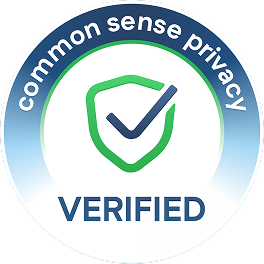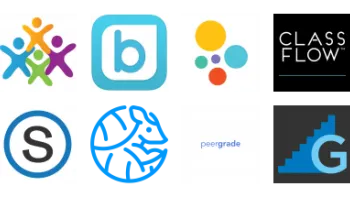Take a look inside 7 images
GooseChase EDU
Pros: Highly engaging; fosters collaboration in any subject area.
Cons: Devices must maintain internet connection; there are few accessibility or multilingual options.
Bottom Line: Students and teachers will enjoy the powerful learning of a modern scavenger hunt.
The types of scavenger hunts you can create with GooseChase EDU are limited only by your creativity. In language arts, try a vocabulary scavenger hunt; for the word "encumbered," students could snap a picture or take a short video of themselves carrying too many things. If students are studying using evidence from text, have them snap photos that back up a certain topic sentence. In math, students can find and submit photos of different geometric shapes or their solutions to problems. Teams could also submit videos (the maximum length is 30 seconds) explaining concepts like divisibility rules or strategies for multiplication facts. In science, students could find different elements around the school or go outside and search for vegetation and wildlife. Physical education teachers might have students record short videos of different badminton or volleyball skills. World language teachers could have teams submit short conversations, or they could name objects in a foreign language and have students submit photos of those objects. If you're using the location-based option, take care not to place any location-based clues in areas with roads, cliffs, fast-moving water, or other hazards.
During a scavenger hunt, a teacher can monitor all activity from the GooseChase EDU website. Many extremely useful features are available to teachers, such as removing submissions that miss the mark or awarding bonus points to teams. Most important, teachers can send messages to teams, a great option for communication when a scavenger hunt is taking place over a large area. Teachers can also decide whether students can see each other's submissions during the game, or if they will remain private. This is a handy feature for shy students or when GooseChase EDU is being used as an assessment activity. After completing a GooseChase, it's a good idea to bring the class together to process some of the findings.
GooseChase EDU is a web-based platform that creates scavenger hunts for an app of the same name on mobile (iOS and Android) devices. First, teachers go to the website to create a new game with a basic description. Teachers then add missions to their game. Each mission is a scavenger hunt clue, which comes in three types: photo/video, text, or location. Photo/video questions are the most popular, where students submit a picture or video (limited in length to 30 seconds). Text missions are completed by typing information. Location questions are interesting but less frequently used: The teacher can set it so that mobile devices fulfill a clue by being in a certain area, down to a 50-meter radius (though they recommend 100 meters). Teachers can access the games library, which has many educator-created scavenger hunts. Just be sure to check a game thoroughly to confirm that it's appropriate for your students. When copying a game, teachers are free to modify it as they see fit.
Students use an iOS or Android app as they complete the scavenger hunt. Teachers have the option to create teams and a starting/ending time for their scavenger hunt, and then assign each mission a point value, which is tallied as teams make their submissions. When the scavenger hunt is over, teachers can choose to download all of the media that teams submitted -- a useful feature should the teacher choose to create a movie or presentation or share some student findings on social media.
The free version of GooseChase EDU is limited to five teams with one active game at a time. This option will be sufficient for many teachers. The Educator Plus plan ($49 per year) allows for up to 10 teams of up to five devices each. This option also has an unlimited number of live games (more than one scavenger hunt can be live) and the ability to do individual games for 40 students. The Educator Premium plan ($199 per year) has the same capabilities but with up to 40 teams or 200 individual participants. Beyond this, school and district pricing is available.
GooseChase EDU lets you create some amazing activities for any subject. Each step for creating a game has directions next to it, making the process a breeze. There are plenty of example games on the site, although often the learning doesn't go beyond identification. To make the most out of the tool, teachers will need to spend time creating thoughtful activities that dig deeper, and it would be great to have a few exemplars on the site that illustrate how the tool is applicable to many subjects, using higher-order thinking. Allowing even lengthier video submissions would allow for more possibility: With a two-minute limit, teams could read a passage or provide an analysis that's more fleshed out and meaningful. And including an option to upload video only when connected to Wi-Fi would offer more flexibility.
Also helpful would be a built-in feature that could support students by reading the clues. The location-style clues are cool, but a 50- or 100-meter radius limits their usefulness. Similarly, the devices that students are using need to maintain an internet connection. This is a hindrance for classrooms that use iPads that connect to the internet only via Wi-Fi, as they can't take those devices in the woods or on a field trip and expect to be connected. An internet connection is a necessity for live updates as the scavenger hunt progresses, but it would be an improvement to at least have the option to perform a hunt offline and to upload media at a later time. Even without these improvements, GooseChase EDU offers a truly engaging, dynamic way for students to collaborate and learn.

















